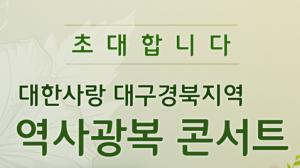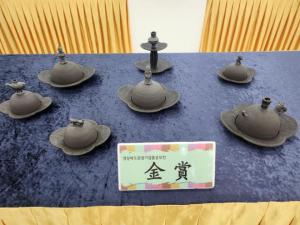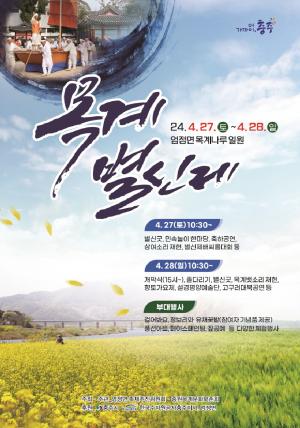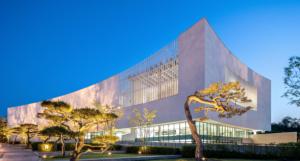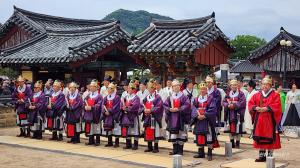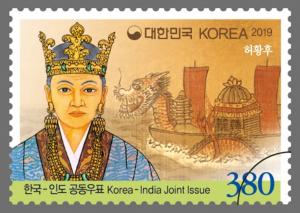문화재청(청장 최응천)은 11월 24일 오전 10시 30분 국립고궁박물관(서울 종로구)에서 일본에서 환수한 《유성룡비망기입대통력<경자>(柳成龍備忘記入大統曆<庚子>)》(이하 대통력)를 언론에 공개한다.
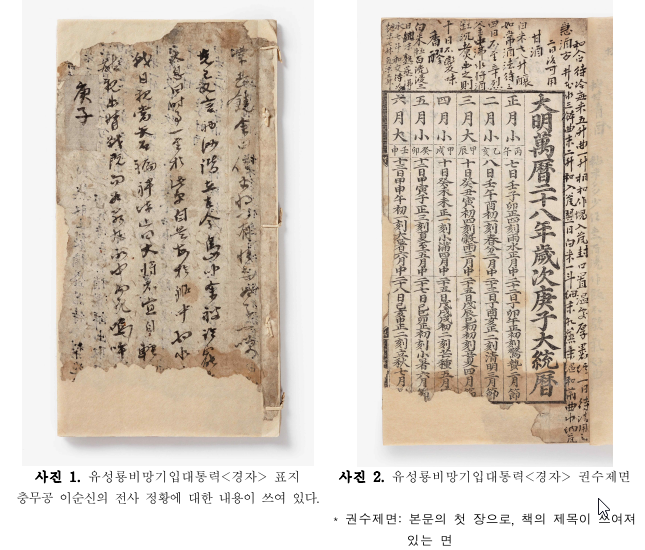 |
| *자료 및 사진 제공: 문화재청 (이하 동일) |
대통력은 오늘날의 달력에 해당하는 조선시대의 책력(冊曆)으로 농사 뿐 아니라 일상생활의 지침으로 활용되어 왔으며, 이번에 환수한 유물은 경자년(1600년)의 대통력이다.
이번 유물은 김문경 교토대학 명예교수의 제보를 통해 그 존재가 알려졌으며, 문화재청과 국외소재문화재재단(이사장 김정희)은 정보 입수 이후 수차례 면밀한 조사를 거쳐 지난 9월 국내로 들여오는 데 성공했다.
※ 유성룡비망기입대통력<경자> : 1599년 간행(금속활자본) / 크기: 전체 38×20cm
* 책력 : 천체를 관측하여 해와 달의 운행과 절기 따위를 적은 책
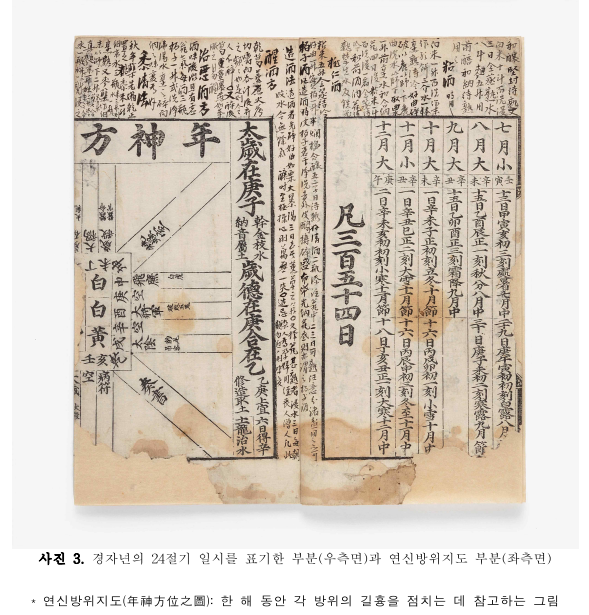 |
소장자는 책력에 자신의 일정이나 감상을 적어두는데, 이번 유물도 그 여백에 묵서(墨書)와 주서(朱書)로 그날의 날씨, 일정, 약속, 병세와 처방 등이 기록되어 있다. 기재된 필적과 주로 언급되는 인물, 사건 등의 정보를 바탕으로 서애 류성룡(柳成龍, 1542~1607)의 문집인 「서애집」 중 류성룡의 연대기가 기록된「서애선생연보(西厓先生年譜)」와 내용을 대조해 본 결과, 서애 류성룡의 수택본(手澤本)으로 추정된다.
*수택본 : 소장자가 가까이 놓고 자주 이용하여 손때가 묻은 책
*묵서 : 먹물로 쓴 글씨
*주서 : 붉은색 글씨
임진왜란기 군사 전략가로서 활약한 서애 류성룡 선생의 기록이자 「서애선생연보」에서 다뤄지지 않은 내용을 포함한 기록이라는 가치 외에도 ▲ 국내 현전하지 않는 경자년(1600년) 대통력이라는 점, ▲ 임진왜란 시 포로가 되어 일본에 압송되었던 강항(姜杭, 1567~1618)의 귀국 등 경자년에 있었던 역사적 사실들을 확인할 수 있으며, 특히 ▲ 가철(假綴)된 표지에는 임진왜란기 충무공 이순신(李舜臣, 1545~1598) 장군이 부하 장수들의 만류에도 불구하고 직접 출전하여 전쟁을 독려하다가 탄환을 맞고 전사한 상황을 묘사한 기록도 담겨 있다는 점에서 특별한 사료적 가치를 더한다.
*가철(假綴) : 책의 원표지가 없어 종이 등을 사용해 임시로 매어둔 형태
 |
이번 환수는 류성룡 선생의 종손가 소장 자료들인 보물 「유성룡 종가 문적」에도 빠져있던 새로운 자료를 발굴해 찾아왔다는 점에서 더욱 뜻깊으며, 향후 국립고궁박물관에서 안전하게 보존관리하면서 조선시대 과학문화재들과 함께 류성룡 관련 원천 자료로서 연구·전시 등에 폭넓게 활용할 예정이다.
문화재청과 국외소재문화재재단은 이번 환수문화재 공개가 조선시대 기록문화 유산에 대한 관심과 자긍심을 고취하는 기회가 되길 바라며, 앞으로도 국외 중요 한국문화재의 발굴과 환수를 위해 현지 협력망 확대 등의 적극행정을 이어갈 계획이다.
*국외소재문화재 매입사업은 복권기금으로 추진되고 있다.
--------------------------------------------------------------
"유성룡비망기입대통력<경자>" 표지 기록
- 탈초 및 번역 : 노승석 여해고전연구소장
…
業甚饒 余曰 倭等將行 有恒頓 爲之一笑 □…
先已又言 初汝諧 在古今島 聞余被論罷 □…
太息曰 時事一至於此乎 自是每於船中 酌水 □…
戰日 親當矢石 褊裨陣止曰 大將不宜自輕 □…(不추정)
[聽] 親出督戰 旣而爲飛丸所中而死 嗚呼 □…
… 과업이 매우 많다. 내가 말하기를 “왜군들은 장차 떠나려고 할 때1) 항상 머리를 조아려서 한바탕 웃었다”고 하였다. □…
이에 앞서 이미 또 말하였다. 당초 여해(汝諧)2)가 고금도(古今島)에 있을 때3) 내가 논핵을 받아 파직된 것을 듣고4) □…
크게 탄식하기를 “시국 일이 한결같이 이 지경에까지 이른 것인가”라고 하였다. 이로부터 매번 배안에 있을 때는 맑은 물을 떠놓고5) □…
전쟁하는 날에 직접 시석(矢石)을 무릅쓰자, 부장(副將)들이 진두지휘하는 것을 만류하며 말하기를 “대장께서 스스로 가벼이 하시면 안 됩니다. □… ”라고 하였다.
(그러나 듣지 않고) 직접 출전하여 전쟁을 독려하다가 이윽고 날아온 탄환을 맞고 전사하였다. 아아! □…
--------------------------------------------------------------
1) 1598년 8월 18일 도요토미 히데요시(豊臣秀吉)가 후시미(伏見城)에서 병사(病死)하자, 도쿠가와 이에야스[德川家康]와 이시다 미쓰나리[石田三成] 등은 일본군에 철수 명령을 내렸다.
島津亮二 〈小西行長順天城戰鬪〉, 진주박물관, 329p(荒木潤 譯).
《宣祖實錄》 1601 4월 25일(임진), “戊戌八月十八日 平秀吉病死 遺言其嬖奴 石田治部卿”
2) 여해(汝諧)는 충무공(忠武公) 이순신(李舜臣 1545∼1598)의 자(字)이다.
3) 무술년 2월 17일에 이순신이 보화도에서 강진(康津) 경내의 고금도(古今島)로 진을 옮겨 통제영을 설치하고(《선조실록》1598, 3, 18, 〈통제사 이순신 서장(書狀)〉), 11월 노량해전 때까지 여기에 주둔하여 명나라와 작전을 하였다.
4) 1598년 9월 류성룡이 논핵을 받아 스스로 탄핵하였다.《서애집》〈연보〉
5) 작수(酌水)는 맑은 물을 떠놓고 청렴을 다진다는 의미인데, 《隋書·循吏傳論》에 “조궤(趙軌)가 임기가 만료되자 맑은 물을 떠놓고 전별하니 청렴하도다(趙軌秩滿, 酌水餞離, 淸矣)”라고 한 내용이 있다. 여기서는 이순신이 류성룡의 파직된 것을 듣고 스스로 경계하는 의미로 사용되었다.
<이하 영문 배포문..제공: 문화재청 >
The Repatriation of a Four-century Old Calendrical Book with Notes on the Daily Life of the Joseon Civil Official RyuSeong-ryong
- Calendrical Book of the Gyeongja Year (1600) with Memoranda by RyuSeong-ryong, a Korean cultural heritage item formerly housed in Japan to be revealed to the Korean public for the first time -
The Cultural Heritage Administration (CHA; Administrator: Choi Eung Chon) will unveil at the National Palace Museum of Korea (located in Jongno-gu, Seoul) on November 24 at 10:30 a.m Calendrical Book of the Gyeongja Year (1600) with Memoranda by RyuSeong-ryong that was acquired in Japan.
The existence of the book was made known by Professor Emeritus Kim Moon-kyong of Kyoto University. Upon obtaining the information, the CHA and the Overseas Korean Cultural Foundation (OKCHF; Chairman: Kim Junghee) carried out several thorough surveys and eventually succeeded in its repatriation this past September.
*Calendrical Book of the Gyeongja Year (1600) with Memoranda by RyuSeong-ryong: A metal-type printed book published in 1599 / Dimensions: 38×20cm (overall)
The returned item is an example of a daetongnyeok, a type of almanac from the Joseon Dynasty that shows similarities with the calendar used today. These calendrical books were used as guidelines for daily life and farming. They were kept handy by their owners, who added notes about their daily schedules along with their thoughts and impressions. The margins of the returned item are inscribed with handwritten ink notes on the weather, the owner’s schedule, appointments, illnesses, and medical prescriptions. Based on the results of an analysis of the handwriting and on information such as the names of figures and events mentioned, the book was compared with content from A Chronology of RyuSeong-ryong (Seoaeseonaesngyeonbo). The results of this comparison suggest that the returned item is a sutaekbon* that belonged to RyuSeong-ryong (1542– 1607; sobriquet: Seoae).
*Sutaekbon: A book that was kept handy by its owner and used frequently
The returned calendrical book is presumed to have belonged to RyuSeong-ryong. It is highly regarded for its value as cultural heritage in that it allows a better understanding of his life and times. It also features details of an event involving Admiral Yi Sun-sin during the Japanese Invasions of Korea. No other calendrical book on this Gyeongja year (the thirty-seventh year in the sexagenary cycle; 1600) has survived in Korea.
This book is particularly notable since along with the content related to Ryu that is not included in A Chronology of RyuSeong-ryong, it provides data on historical facts that occurred in the Gyeongja year (1600). These include the return of Kang Hang (1567–1618), who had been captured and sent to Japan during the Japanese Invasions of Korea, and the passing of Queen Uiin, the consort of King Seonjo. In particular, the book carries further historical value in that the cover, which has been temporarily bound since the original cover has been lost, features a detailed record of Admiral Yi Sun-sin (1545–1598) and how he died from a gunshot wound on the battlefield during the Japanese Invasions of Korea. It describes how he decided to fight personally as a means to encourage his soldiers, despite the dissuasion of his subordinates.
The calendrical book will hereafter be managed by the National Palace Museum of Korea and is expected to be widely utilized for research and exhibition along with other scientific cultural heritage items dating to the Joseon Dynasty housed in the museum. It is particularly meaningful in that it represents a discovery and repatriation of new materials that were missing from the state-registered Treasure “Documents of RyuSeong-ryong’s Family.” Moreover, the item is expected to contribute to research and utilization as a primary resource related to RyuSeong-ryong.
The CHA and OKCHF hope that the repatriation and unveiling of the calendar will serve as an opportunity to inspire interest and pride among the public in Joseon-era recorded cultural heritage. The two institutions plan to continue their strenuous efforts searching for and repatriating Korean cultural heritage in overseas collection through efforts for proactive administration and the expansion of local cooperative networks.
※The acquisition of the item was made possible by the National Lottery Fund.
Attachment 1. The Deciphering and Translation of the Record on the Cover of Calendrical Book of the Gyeongja Year with Memoranda by RyuSeong-ryong
2. Images
Attachment 1. The Deciphering and Translation of the Record on the Cover of Calendrical Book of the Gyeongja Year with Memoranda by RyuSeong-ryong
Deciphered and Translated by Ro Seungsuk (Director of the Yeohae Institute of Classical)
…
業甚饒 余曰 倭等將行 有恒頓 爲之一笑 □…
先已又言 初汝諧 在古今島 聞余被論罷 □…
太息曰 時事一至於此乎 自是每於船中 酌水 □…
戰日 親當矢石 褊裨陣止曰 大將不宜自輕 □…
[聽] 親出督戰 旣而爲飛丸所中而死 嗚呼 □…
There are plenty of tasks. I said, “Whenever the Japanese forces attempted to leave,1) they always bent their heads down toward the ground, so had a good laugh.”
[Yeohae (Yi Sun-sin)]2) has said before that he initially heard of my impeachment3) and withdrawal from office when he was on Gogeumdo Island4) …
[Yeohae] heaved a sigh and said, “How did things turn out like this?” Since then, whenever [he] was aboard ship, [he] had clean water scooped up [in a bowl]5) …
On the day of the battle, [Yeohae] personally risked his life firing arrows and flinging stones, so the adjutant generals asked to him to stop fighting saying, “General, you should not value your life so lightly.”
[However, giving no heed to their urging], [Yeohae] entered the battle and encouraged his soldiers. In the end, he was hit with a flying bullet and died. Alas! …
------------------------------------------
1) When ToyotomiHideyoshi died of illness in Fushimi Castle on the eighteenth day of the eighth lunar month of 1598, Tokugawa Iyeyasu and Ishida Mitsunari ordered the Japanese forces to retreat. (“戊戌八月十八日平秀吉病死遺言其嬖奴石田治部卿” from the entry on the Imjin year on the twenty-fifth day of the fourth lunar month of 1601 in the Annals of King Seonjo). See ShimazuRyōji, KonishiYukinaga’s Battle at Suncheonseong Fortress, trans. Araki Jun (Jinju: Jinju National Museum, 2017), 329.
2) Yeohae is the courtesy name of Yi Sun-sin (1545–1598).
3) In the ninth lunar month of 1598, RyuSeong-ryong was impeached and then resigned of his own accord. See “A Chronological History of RyuSeong-ryong” in Collected Works of Seoae (Seoaejip).
4) On the seventeenth day of the second lunar month of the Musul year, Yi Sun-sin transferred a fortification from Bohwado Island to Gogeumdo Island in Gangjin and installed the Tongjeyeong (Regional Naval Headquarters) there. (See “Letter by the Commander-in-Chief Yi Sun-sin” included in the entry for the eighteenth day of the third lunar month of 1598 in the Annals of King Seonjo.) Yi Sun-sin stayed there and planned joint operations with the Ming forces until the Naval Battle of Noryang in the eleventh lunar month.
5) “酌水” means scooping up clean water and reminding oneself of uprightness. It emphasizes the uprightness expected of an official. According to the “Biographies of Upright Officials” section in the Book of Sui (Suishu), “When the tenure of his office lapsed, Zhao Gui had clean water scooped up [in a bowl] and bid farewell. This demonstrates his uprightness.”
김대한 기자 daehannama73@gmail.com
<저작권자 © 한韓문화타임즈, 무단 전재 및 재배포 금지>

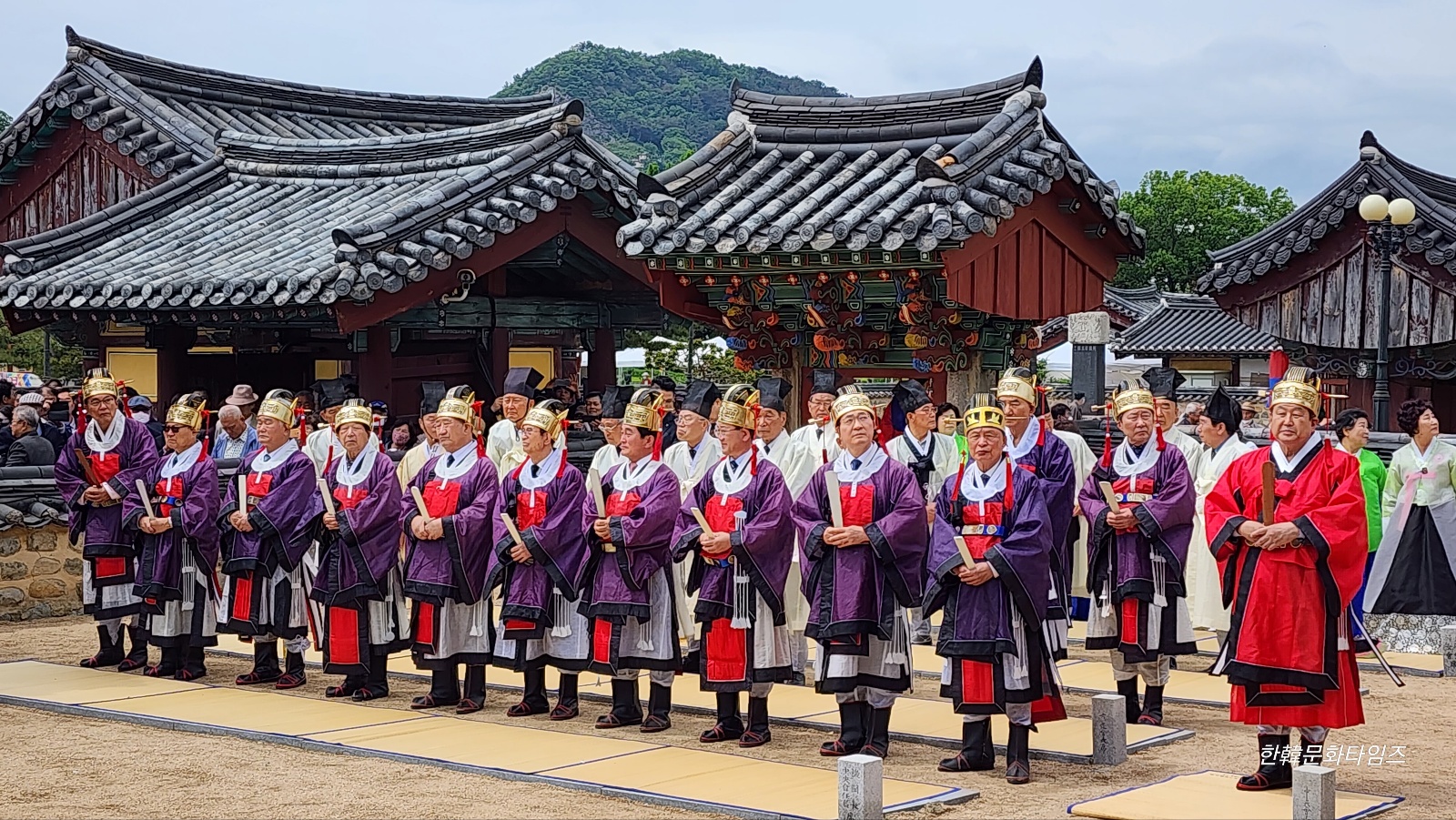 오늘, 음력 3월 15일은 김수로왕의 가야국 건국일
오늘, 음력 3월 15일은 김수로왕의 가야국 건국일
